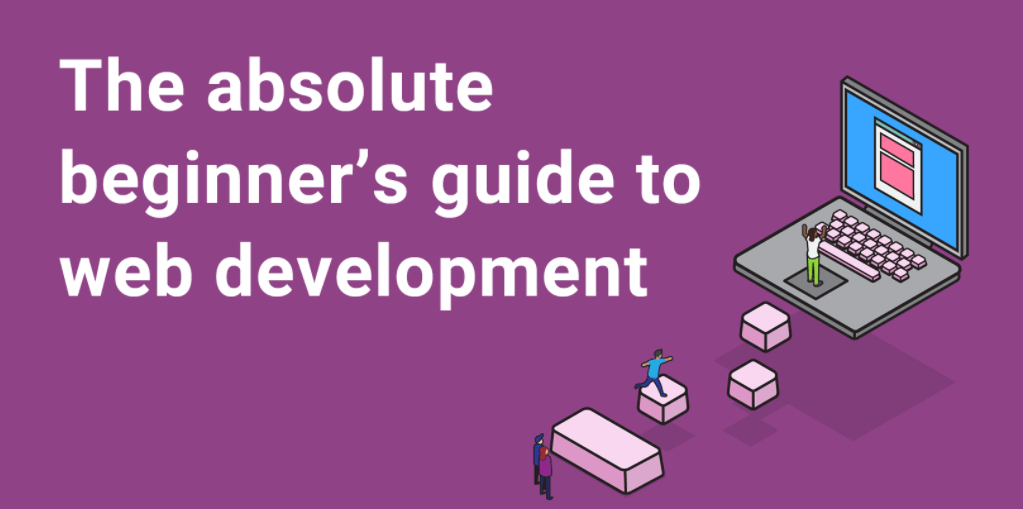Table of Contents
From the most basic applications to the most revolutionary breakthroughs, technology plays a significant part in our everyday lives. A web developer created every website or piece of software we encounter — but what exactly is web development, and what do they do? In this article, you’ll find out how to start learning web development for future success.
1. Discover What Exactly Web Developing Is
Creating and maintaining websites is the responsibility of a web developer. Front-end, back-end, and full-stack web developers all have distinct roles and obligations, yet they all work for the same company. Full-stack developers work on both the front and back ends of a project. Most of the company nowadays hire employees who have undergone some full stack developer course as they are multi-tasking and reliable too. we’ll get into more detail about what a full-stack developer does later.
Customers or end-users have high expectations, and web developers must meet those expectations by producing a solution that meets both of those goals at once. To understand the ultimate website’s vision, stakeholders, clients, and designers collaborate with web developers: how should it look and function?
This IT field also includes a substantial amount of work to identify and fix problems as they arise to improve and optimize a website or system. Developers that work on the web have to be proficient at finding answers and workarounds to issues.
Of course, every developer is fluent in at least one programming language. However, depending on their job title and area of specialization, various developers will work with different languages. Let’s take a closer look at the multiple levels of this job and the duties connected with them.
Must Read: Best web development tools for beginners
2. Decide on a Development Specialization
As you advance in your career, you’ll need to pick a field of specialty. But, what are the different forms of web development? All of them are divided into three types:
- Front-end developer. A front-end developer is responsible for working on any component of a website or app that users may interact with. That might include the layout, design, and user interaction with a site;
- Back-end developer. As the name implies, a back-end developer concentrates their efforts on the “server-side” of the web. That focuses on how a site operates and might involve databases, servers, networks, and hosting, among other things;
- Full-stack developer. A full-stack developer is well-versed in front-end and back-end programming and can perform on all sides of a webpage.
3. Learn the Most Important Programming Languages
You’ll need to know how to use many computer languages for web development and design, no matter your subject of study. So, which are the most widely used programming languages?
These three families of programming languages serve as the foundational tools for almost all IT areas:
- HTML (HyperText Markup (Hypertext Markup Language);
- Cascading Style Sheets (Cascading Style Sheets);
- JavaScript.
Of course, this is only the beginning of the list. In reality, web development is such a vast and varied area that a list of all the jobs it might involve (as well as all the programming languages and markup languages you can employ to achieve them) would take up too much room in this space.
Fortunately, if you have some hard time with your homework assignments, you can have extra programming help from MyAssignmentLab by asking questions and getting an assignment to be done from scratch in any STEM discipline.
Must Read: 5 Easy Freelancing Mistakes Which You Need To Avoid While Starting Out
4. Create Projects to Improve Your Skills of Learning Web Development
Once you’ve learned the foundations of HTML, CSS, and JavaScript, as well as a strong foundation of programming skills, you’re ready to start creating. As you go, you’ll gain knowledge by making use of an ever-expanding range of this area’s abilities.
The simplest way to improve your skills is to start practicing them. Using the jQuery library of functions for more efficient programming, or working with version control systems like Git, are examples of “hard” technical ability. The more you use them, the better you get.
5. Create a Portfolio
If you’re seeking work in the IT field, your best weapon is a compelling portfolio that showcases your best skills as an expert. Three considerations should be made while putting together a portfolio that will stand out from the others.
Priority one: include a variety of web development tasks in your professional portfolio. You want to be selective and highlight your best work, but your selection should be wide enough to show that you have a thorough understanding of the position’s numerous facets.
Research the company and the position you want to fill before applying for a job. Then, streamline your portfolio by deleting irrelevant examples and accentuating your A front-end developer is responsible for working on any work.
Secondly, think about what makes you and your work unique. Focus on your professional skills to help you stand out in your portfolio, not just in the work you provide but also in how you present your portfolio.
Thirdly, demonstrate your procedure. Employers are interested not just in the quality of your work but also in how you address challenges. Don’t be hesitant to frame each example as a case study, describing your thinking process and the problem you attempted to tackle with the project.
Getting started on a new career in IT might be the most challenging aspect along start learning web development. However, once you do, you may be amazed at how much you can learn in a single day using the internet tools accessible. Eventually, it’s only a question of honing your abilities in preparation for your future profession.




![1000 Girl Attitude Names for Truecaller ID | UPDATED [Included Boys Names] 1000 Attitude Names for Girls on Truecaller](https://edutechbuddy.com/wp-content/uploads/2025/05/ChatGPT-Image-May-21-2025-11_59_39-PM-1-150x150.png)








![1000 Girl Attitude Names for Truecaller ID | UPDATED [Included Boys Names] 9 1000 Attitude Names for Girls on Truecaller](https://edutechbuddy.com/wp-content/uploads/2025/05/ChatGPT-Image-May-21-2025-11_59_39-PM-1.png)